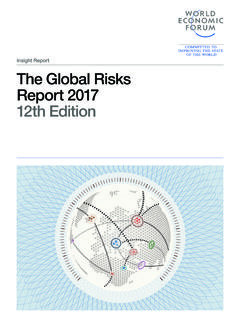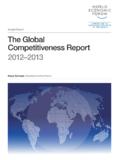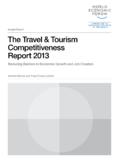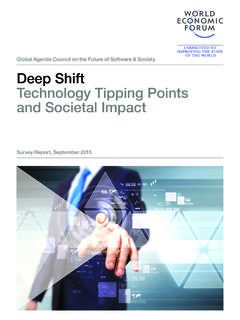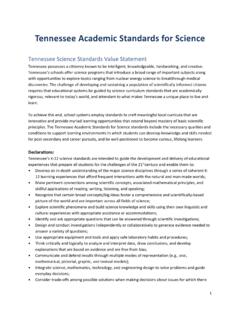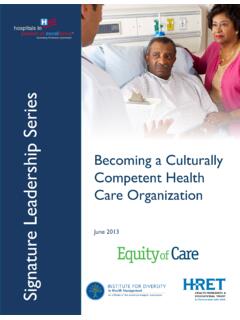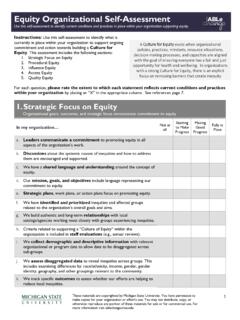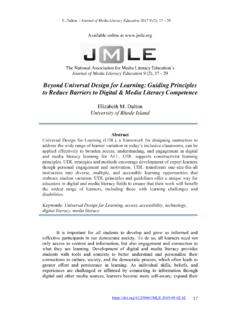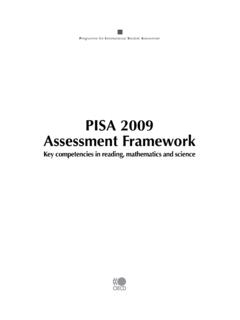Transcription of WHITE PAPER
1 Shared Guiding principles for Digital Health InclusionWHITE PAPERNOVEMBER 2021 The EDISON AllianceContentsForewordExecutive summary1 The principles for Digital Health InclusionContributorsEndnotes3451011 Images: Getty Images 2021 World Economic Forum. All rights reserved. No part of this publication may be reproduced or transmitted in any form or by any means, including photocopying and recording, or by any information storage and retrieval This document is published by the World Economic Forum as a contribution to a project, insight area or interaction.
2 The findings, interpretations and conclusions expressed herein are a result of a collaborative process facilitated and endorsed by the World Economic Forum but whose results do not necessarily represent the views of the World Economic Forum, nor the entirety of its Members, Partners or other Guiding principles for Digital Health Inclusion2 ForewordThe principles for Digital Health Inclusion set out in this report complement the larger principles of the EDISON Alliance in order to encourage thoughtful action in its focus areas of finance, education and health.
3 The principles serve as a guide for partnerships in digital healthcare, with the intent of raising questions of inclusion at the inception of a project, rather than as an afterthought. As in finance and education, COVID-19 has accelerated the digitalization of healthcare delivery, bringing a qualitatively different world of care much closer. As a result, an explicit system approach to inclusion is the responsibility of all. This WHITE PAPER was developed as an initiative of the World Economic Forum s EDISON Alliance, and would not have been possible without the contribution of the EDISON Alliance partners teams at Apollo Hospitals, Dell, Jefferson Health and the United Nations Economic Commission for Africa (UNECA)
4 , whom we would like to thank for their efforts and commitment to shaping an inclusive healthcare system, as well as the broader members of the EDISON Alliance for their ongoing support and Kamineni Executive Vice-Chairperson, Apollo HospitalsStephen K. Klasko Chief Executive Officer, Jefferson Health; President, Thomas Jefferson UniversityDerek O Halloran Head, Shaping the Future of Digital Economy and New Value Creation; World Economic ForumShared Guiding principles for Digital Health InclusionNovember 2021 Shared Guiding principles for Digital Health Inclusion3 Executive summaryThe EDISON Alliance has developed the following principles to guide organizations to explore sustainable, effective, public-private partnerships as one of the avenues to find solutions for some of the inherent challenges that exist in providing healthcare services across the globe.
5 Creating digital products and connected care platforms in healthcare is a proven step in this direction to ensure continuum of care. The opportunity: Using digital tools to provide connected care creates an unprecedented opportunity to bridge gaps and reduce health disparities. The pandemic has accelerated the use of digital technology in healthcare throughout the globe at a rapid pace compared to the pre-COVID-19 era. This has included the adoption of information and communication technology in healthcare, such as telemedicine services and remote care in all formats of primary, specialty and emergency services.
6 In response to the pandemic, many governments have encouraged, reimbursed, or permitted synchronous and asynchronous virtual engagement between clinicians and patients, which, in turn, has built confidence among caregivers and care seekers in using this have rapidly increased to reach notable levels in all spheres of health technology advancement, such as: Telehealth platforms and application developments The Internet of Medical Things Artificial intelligence (AI) and machine learning The delivery of technology-enabled healthcare services beyond brick-and-mortar boundaries Connected care links between patients and medical providers of care Hospital at Home and other initiatives to support care at any addressTechnology intervention has enabled communities to mitigate the outbreak and support life-threatening situations of COVID-19 infection in communities and has made significant contributions in saving lives.
7 Giving hope for a new future of healthcare quality to this digital acceleration and development, the gap has widened between those who can benefit from digital tools and those who cannot. This gap includes issues of access the sheer lack of broadband connectivity for millions of people and adoption, due to social determinants of health and the lack of digital readiness and skills, as well as an issue of trust in the use of digital solutions for healthcare delivery. While these gaps in access and adoption are clear, the use of digitally-connected care creates an unprecedented opportunity to bridge the divides.
8 Digital tools provide new ways to overcome transport barriers, monitor and triage, and take advantage of new advances in precision medicine across populations in a cost-effective manner. The challenge: To ensure ethics and equity in this rapidly developing field, empowering communities with choice and knowledge-based following principles are designed to maximize the opportunities for digitally-connected medicine and chart a course for responsible and inclusive innovation in connected care that improves equitable healthcare access and many organizations have developed parallel principles for issues such as human rights, AI in medicine1 and data governance for research.
9 The principles in this document represent the EDISON Alliance s broad coalition across private industry in collaboration with its public partners. These principles function as a parallel to the core principles for financial inclusion developed by the EDISON models of healthcare delivery in a connected world. Using digital tools to provide connected care creates an unprecedented opportunity to bridge gaps and reduce health disparities. Shared Guiding principles for Digital Health Inclusion4 Multiple international organizations call for healthcare as a fundamental human right.
10 For digital healthcare, this means embedding inclusion and equitable access as a principle in the design of all products, services, policies, regulations, supervisory practices, security procedures, technologies and 1: Inclusive by design, prioritizing equity and access People centric: focusing on the fundamental rights of every individual to wellness and good health with a commitment to healthcare for all, irrespective of creed, gender and place of birth. Giving special attention to equity for individuals and communities who are unserved and underserved.
